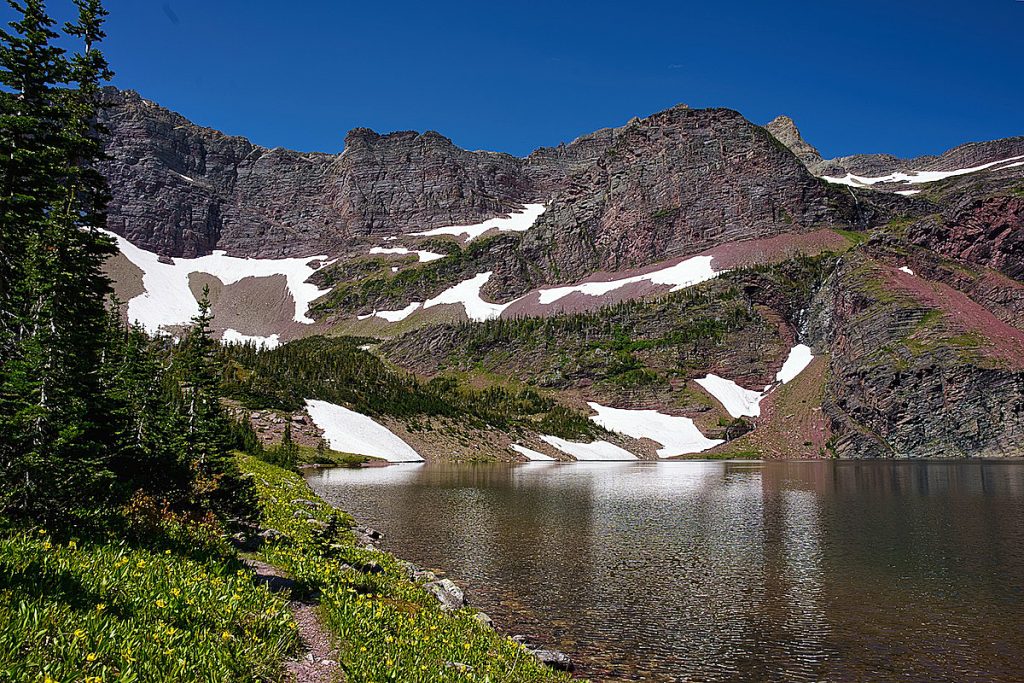Today, on the 17th of September 2025, I set out from Rising Sun and followed the trail into the mountains of Glacier National Park. The morning greeted me with brilliant sunshine, the air was crisp yet gentle, and the light made the slopes and cliffs glow with colors that seemed almost unreal. As I climbed steadily toward Otokomi Lake, the landscape unfolded around me, and the mountains revealed themselves like guardians of the valley.
To the west, across the wide expanse of St. Mary Lake, the first peaks rose in majestic silence. Red Eagle Mountain stood broad and commanding, its slopes painted in deep rust and brown tones that gave the impression of weathered strength. The ridges seemed to catch the sunlight and glow warmly, a striking contrast against the clear blue sky. Next to it, Mahtotopa Mountain rose with an elegant symmetry, its ridgeline sharp and well defined. Its face looked paler than Red Eagle, streaked with gray and soft beige, as though it carried the color of old bones.

Beyond it, Little Chief Mountain thrust its great bulk into the air, massive and dignified, with sheer cliffs that seemed to rise almost vertically from the valley. Beside it, Dusty Star Mountain caught my eye, its pointed crown and reddish flanks giving it a rugged and almost restless appearance, as though it had been carved by fire. These western peaks stood apart from me across the lake, but they shaped the horizon like a painted backdrop, monumental and still.
On the eastern side of the valley, the mountains were closer, their presence more immediate, as though they were watching over each step of my path. Otokomi Mountain accompanied me from the very beginning of the hike. Its dark slopes rose steeply from the trail, its surface a mix of deep red argillite and dark shadows, giving it a stern, almost brooding face.
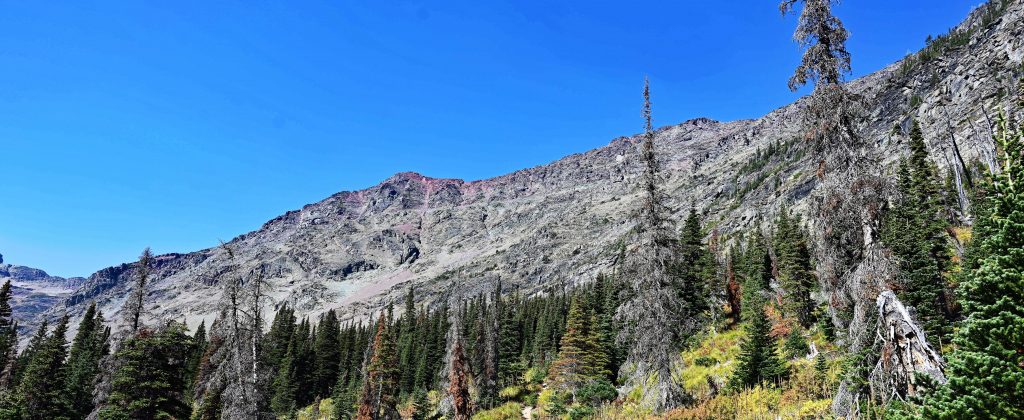
It felt like a wall of stone guiding me along the narrow way. Farther into the basin, Goat Mountain became the dominant figure. Its summit towered above, light gray and weathered, with broad flanks streaked by gullies and red layers at its base.

From a distance, it seemed like an immense fortress of stone, silent and protective, standing directly above Otokomi Lake as if to guard it. Between these named peaks, other ridges and unnamed cliffs appeared,
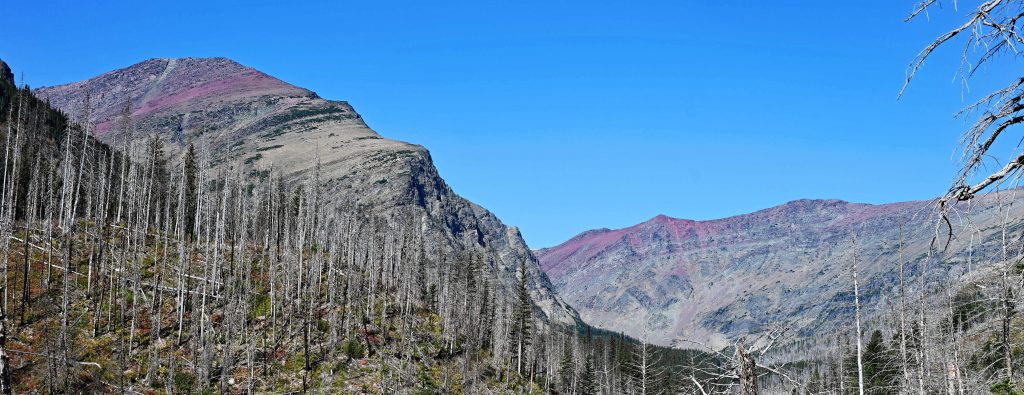
their red and gray walls forming a circle of grandeur around Rose Basin, giving me the feeling of walking deeper into a natural amphitheater.

The trail itself followed Rose Creek, though at first I could not see it. I only heard the faint music of water tumbling somewhere below the trees, a distant voice hidden in the canyon. After about two miles, the creek revealed itself with sudden force, plunging down in a fall of nearly fifteen meters.
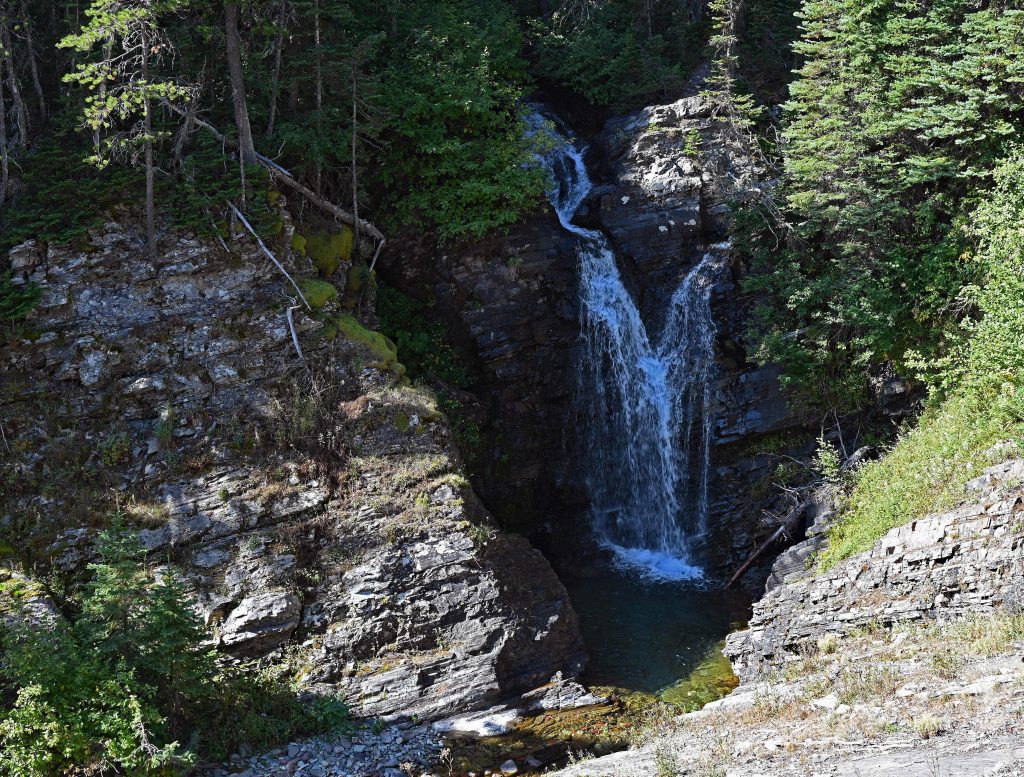
The water foamed white against the dark rocks, flashing in the sunlight, and I stopped to take in its power. From then on, Rose Creek often kept me company, flowing alongside the trail, showing itself in glimpses and sparkling threads, with a few more small waterfalls adding sparkle and life to the quiet valley.
As I climbed higher, the forest thinned,
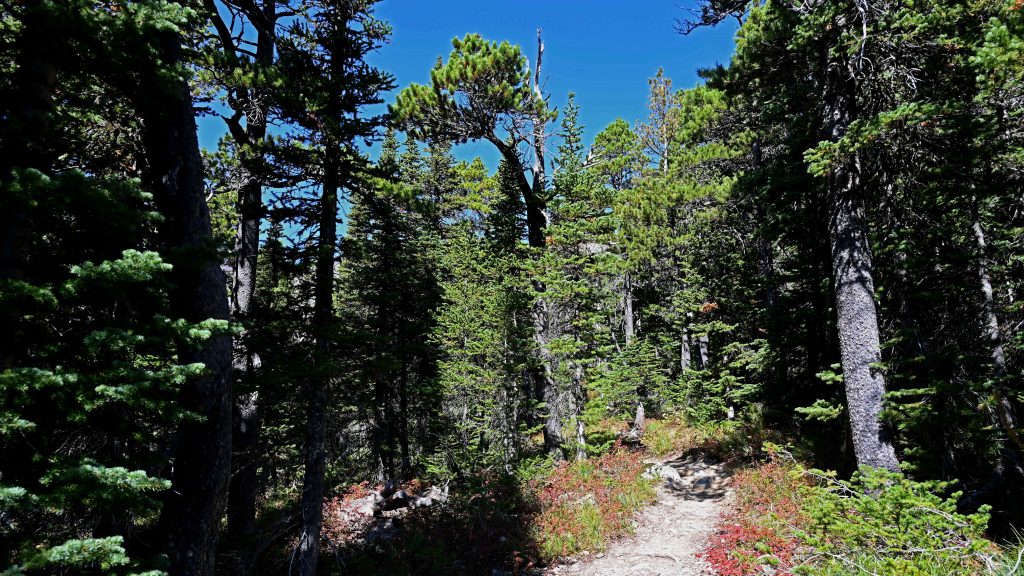
and the mountains pressed in closer, their shapes growing ever more dramatic. The red walls of Otokomi Mountain glowed like embers in the afternoon light, while the pale gray crown of Goat Mountain rose directly ahead. Across the valley, the massive forms of Red Eagle, Mahtotopa, Little Chief, and Dusty Star continued to dominate the skyline, now softened by the golden haze of the autumn sun. Surrounded by these peaks,

I felt as if I were walking through a vast cathedral of stone, each mountain a column rising into the sky, each face marked by colors, shadows, and the memory of ancient forces.
By the time I reached Otokomi Lake, the circle was complete. The basin lay still and quiet, held in the arms of Goat Mountain and the surrounding cliffs. The water reflected the stone and the sky, and I felt enclosed within the mountains I had been admiring all day, as though they had gathered together to welcome me at the end of the trail.
